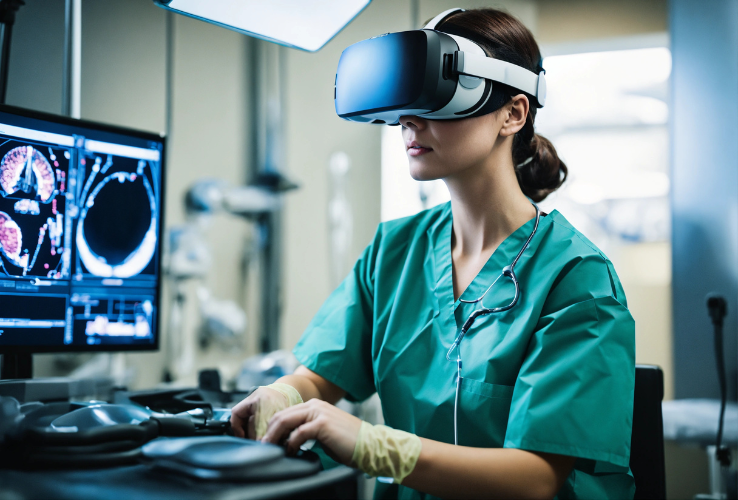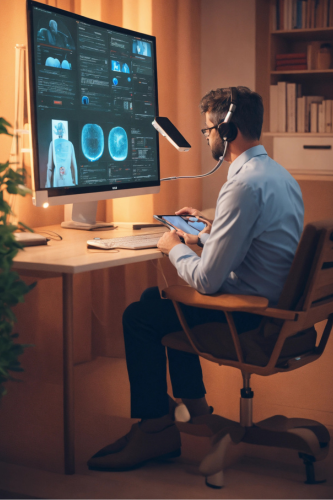Wearable Technology in Healthcare: Enhancing Patient Monitoring
The rhythm of healthcare is changing. What was once a domain driven by episodic care—reactive visits to clinics or hospitals—has evolved into a model that revolves around continuous, real-time engagement. At the heart of this transformation is wearable technology. From tracking vital signs to managing chronic diseases, wearables are redefining how healthcare providers monitor and respond to patient needs, offering a window into the daily lives of those they care for.
This shift is more than a technological trend; it represents a fundamental change in how healthcare is delivered, with wearables enabling preventive care, improving chronic disease outcomes, and empowering individuals to take control of their health. Yet, the journey of wearable technology in healthcare is just beginning.

The Rise of Wearables in Healthcare
Wearable devices have transitioned from niche gadgets for fitness enthusiasts to sophisticated tools capable of monitoring critical health parameters. The evolution of these devices has been driven by advancements in sensors, data analytics, and connectivity, coupled with a growing emphasis on personalized healthcare.
What sets wearables apart is their ability to collect and transmit real-time data, providing healthcare providers with insights that were previously unavailable. No longer confined to snapshots of a patient’s health taken during infrequent visits, wearables offer a continuous stream of information, enabling dynamic and informed decision-making.
For example, a heart patient wearing a smartwatch equipped with an electrocardiogram (ECG) feature can have arrhythmias detected and flagged before they develop into severe complications. Similarly, individuals managing diabetes can rely on continuous glucose monitors (CGMs) to track their blood sugar levels, receiving alerts for dangerous fluctuations.
How Wearables Are Transforming Patient Monitoring
1. Real-Time Data for Proactive Care
One of the most significant benefits of wearable technology is its ability to enable proactive, rather than reactive, healthcare. By continuously monitoring vital signs such as heart rate, blood pressure, and oxygen levels, wearables provide early warnings for potential health issues.
For instance, patients recovering from surgery can wear devices that monitor vital parameters remotely. Healthcare providers are alerted to deviations from normal ranges, allowing for timely interventions that can prevent hospital readmissions.
2. Chronic Disease Management
Chronic diseases like diabetes, hypertension, and chronic obstructive pulmonary disease (COPD) are some of the most challenging and resource-intensive conditions to manage. Wearable devices play a crucial role in improving outcomes for these patients by enabling continuous monitoring and personalized care.
Take hypertension, for example. A wearable blood pressure monitor can track fluctuations throughout the day, providing insights into how stress, physical activity, or medications affect the patient. These insights allow doctors to tailor treatment plans more effectively, improving overall disease management.
3. Empowering Patients
Wearables don’t just benefit healthcare providers—they empower patients by making health data accessible and actionable. With apps linked to their devices, individuals can monitor trends, set goals, and make informed decisions about their lifestyle and treatment adherence.
This sense of empowerment fosters engagement, which is particularly important for managing lifestyle-driven conditions like obesity and diabetes. Studies have shown that patients who actively participate in their healthcare tend to have better outcomes, and wearables make such participation both easy and intuitive.
Challenges and Considerations
While the potential of wearables in healthcare is immense, integrating them into mainstream medical practices comes with challenges:
- Data Overload: Continuous monitoring generates vast amounts of data, creating a need for robust systems to store, analyze, and act upon this information. Without effective filtering and interpretation, the sheer volume of data can overwhelm healthcare providers.
- Interoperability: Many wearables operate on proprietary platforms, making it challenging to integrate their data into electronic health records (EHRs). Achieving interoperability between devices and healthcare systems is crucial for seamless patient care.
- Privacy and Security: Wearables collect sensitive health data, raising concerns about privacy and cybersecurity. Ensuring that this data is encrypted and protected is essential to building trust among users and providers.
- Equity in Access: While wearable technology is becoming more affordable, cost remains a barrier for some populations. Addressing this inequity is vital to ensuring that the benefits of wearables reach all segments of society.

Future Trends: The Next Generation of Wearables
Artificial intelligence is transforming how wearable data is interpreted. Advanced algorithms can analyze patterns and predict potential health issues before they arise. For example, AI could detect subtle changes in a patient’s heart rate variability that indicate stress or illness, prompting early intervention.
Biosensors and Biometric Advances
Future wearables are likely to include more sophisticated sensors capable of measuring new health metrics, such as hydration levels, hormone fluctuations, or even early cancer markers. These advancements will expand the range of conditions that wearables can monitor and manage.
Wearables in Clinical Trials
Pharmaceutical companies are increasingly using wearables in clinical trials to collect real-time data on participants. This approach not only improves the accuracy of trials but also enhances patient engagement and compliance.
Integration with Telehealth
The rise of telehealth during the pandemic has created an ideal ecosystem for wearable technology. Wearables provide the data that fuels virtual consultations, enabling doctors to deliver personalized care without in-person visits.
Conclusion: Redefining the Patient-Care Journey
Wearable technology is more than just a tool; it’s a bridge connecting patients and providers in ways that were once unimaginable. By enabling continuous monitoring, empowering individuals, and supporting proactive interventions, wearables are transforming healthcare into a more patient-centric and outcome-driven industry.
However, realizing the full potential of wearables requires addressing challenges such as data management, interoperability, and equitable access. For healthcare providers, investing in the integration of wearables is not just about keeping up with technological advancements—it’s about reimagining the delivery of care to meet the needs of a modern, connected world.
As wearables become increasingly sophisticated and widespread, they hold the promise of a healthier, more informed society. The future of healthcare is wearable, and the journey has only just begun.

